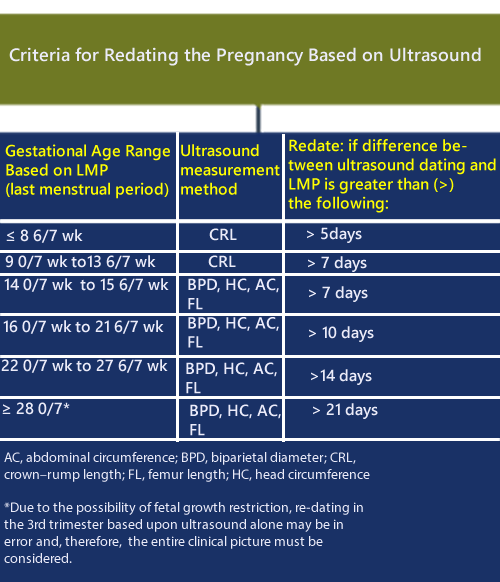
Ultrasound Measurements in Pregnancy: A Comprehensive Guide
Introduction
Ultrasound measurements play a crucial role in monitoring fetal growth and development throughout pregnancy. These measurements provide valuable information about the baby’s size, estimated due date, and potential health concerns. This article aims to provide a comprehensive overview of ultrasound measurements in pregnancy, including their significance, techniques, and interpretation.
Significance of Ultrasound Measurements
Ultrasound measurements are essential for:
- Estimating Gestational Age: Determining the baby’s age and estimated due date based on measurements such as crown-rump length (CRL) and biparietal diameter (BPD).
- Monitoring Fetal Growth: Tracking the baby’s growth rate and identifying any potential growth restrictions or excessive growth.
- Assessing Fetal Anatomy: Evaluating the baby’s organs, limbs, and other anatomical structures for any abnormalities or developmental concerns.
- Detecting Multiple Pregnancies: Identifying the presence of twins, triplets, or higher-order multiple pregnancies.
- Evaluating Amniotic Fluid Volume: Assessing the amount of amniotic fluid surrounding the baby, which can indicate potential complications.
- Screening for Fetal Anomalies: Identifying potential birth defects or genetic disorders through specialized ultrasound examinations, such as nuchal translucency (NT) and anomaly scans.
Techniques for Ultrasound Measurements
Ultrasound measurements are performed using a high-frequency sound wave transducer that emits sound waves into the uterus. The reflected sound waves create images of the baby and its surroundings. There are two main types of ultrasound techniques used in pregnancy:
- Transabdominal Ultrasound: The transducer is placed on the mother’s abdomen, providing a wider view of the uterus and fetus.
- Transvaginal Ultrasound: The transducer is inserted into the vagina, offering a clearer and more detailed view of the early pregnancy and fetal structures.
Key Ultrasound Measurements
The following are some of the key ultrasound measurements taken during pregnancy:
- Crown-Rump Length (CRL): Measures the length of the baby from the top of the head to the bottom of the buttocks, used to estimate gestational age in early pregnancy.
- Biparietal Diameter (BPD): Measures the width of the baby’s head from ear to ear, used to estimate gestational age and monitor head growth.
- Femur Length (FL): Measures the length of the baby’s thigh bone, used to assess skeletal growth and identify potential growth concerns.
- Abdominal Circumference (AC): Measures the circumference of the baby’s abdomen, used to assess growth and identify potential abdominal abnormalities.
- Amniotic Fluid Index (AFI): Measures the amount of amniotic fluid in four quadrants of the uterus, used to assess the volume of amniotic fluid.
Interpretation of Ultrasound Measurements
The interpretation of ultrasound measurements is complex and requires expertise. The measurements are compared to established reference ranges and gestational age-specific norms. Deviations from these norms may indicate potential health concerns or developmental issues.
- Growth Assessment: Ultrasound measurements are used to create growth charts that track the baby’s growth rate. Significant deviations from the expected growth curve may require further investigation or intervention.
- Fetal Anatomy Evaluation: Ultrasound examinations assess the baby’s organs, limbs, and other anatomical structures for any abnormalities or developmental concerns.
- Amniotic Fluid Assessment: The amount of amniotic fluid is evaluated to ensure it is within the normal range. Excessive or insufficient amniotic fluid can indicate potential complications.
- Estimated Due Date: Ultrasound measurements are used to calculate the estimated due date (EDD) based on the baby’s size and gestational age. However, the EDD may be adjusted based on other factors, such as the mother’s menstrual history or previous pregnancies.
Limitations and Considerations
While ultrasound measurements are valuable, they have certain limitations:
- Accuracy: Ultrasound measurements can be affected by the skill and experience of the sonographer and the quality of the ultrasound equipment.
- Variability: Fetal measurements can vary slightly from one ultrasound to another, especially in early pregnancy.
- Estimated Due Date: The EDD calculated from ultrasound measurements is an estimate and may not always be accurate.
- Fetal Position: The baby’s position in the uterus can affect the accuracy of certain measurements.
Conclusion
Ultrasound measurements are an essential tool in monitoring fetal growth and development throughout pregnancy. These measurements provide valuable information about the baby’s size, estimated due date, and potential health concerns. However, it is important to understand the limitations and considerations associated with ultrasound measurements and to consult with a healthcare professional for accurate interpretation and guidance.